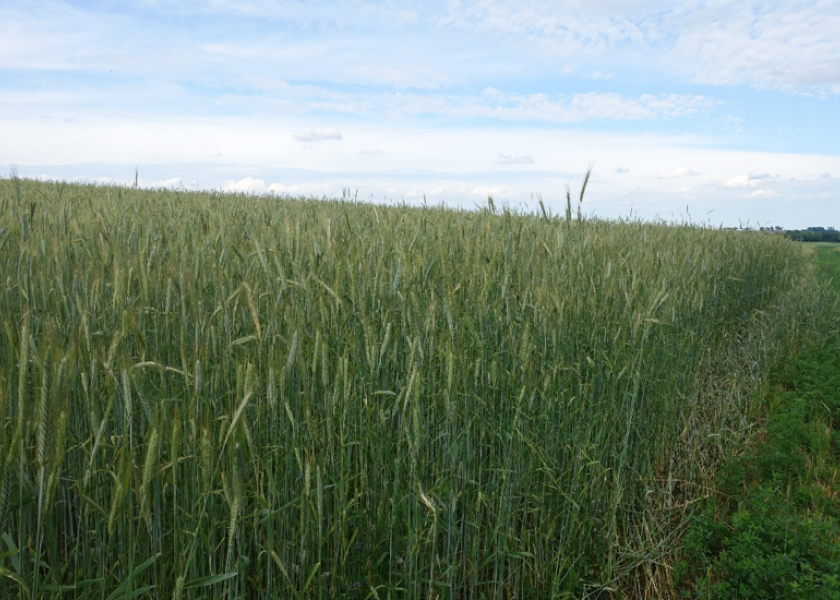Cereal Rye: It’s what’s for Breakfast for Many Dairy Heifers

Cover crops are the current darlings of the agronomy world. They are praised for adding organic matter to the soil, reducing soil erosion, suppressing weeds and recycling and retaining valuable soil nutrients.
They also have been heavily supported by government funding, fueling widespread adoption.
For dairy producers, fall-seeding cereal (grain) rye after corn silage or soybean harvest can produce a hardy, easy-to-grow forage crop that is ready for harvest in the spring, usually around mid-April. “Rye germinates and grows at low fall temperatures; it will resume growth in the spring when temperatures rise above 38˚F,” said Michigan State University Extension Agronomist (now retired) Roberta Osborne. “The yield in the spring could be 6 to 7 wet tons (1 to 4 tons dry matter) of silage per acre, with a feed value of more than $315 per acre.”
Osborne said rye silage is higher in fiber and lower in starch than corn silage, which makes it an excellent feedstuff for dry cows and growing heifers. When harvested at boot stage, the forage will have a protein content of more than 15%, according to University of Wisconsin Arlington Agricultural Research Station Superintendent Mike Bertram. “A mixture of 50% ryelage and 50% corn silage would be adequate to meet the protein requirement of approximately 13% for bred dairy heifers,” said Bertram.
On the downside, the harvest window for chopping and ensiling rye is fairly narrow, and wet spring conditions can interfere with ideal timing for silage-making. Bertram noted that if rye harvest is delayed beyond boot stage, the protein content may drop to as low as 10%. “In that case, the heifer diet may require additional legume silage or a protein supplement to meet desired protein levels.”
Most producers plant no-till soybeans or silage corn varieties into rye acres post-harvest. Bertram also cautioned that rye has an extensive root system that can deplete moisture in dry years, even after the rye is harvested. Another hazard is armyworm infestation, which can occur in corn planted after winter rye because the cereal forage is an attractive site for moth egg-laying in the spring. “Keep a close eye on the developing corn crop, and control any rye regrowth as soon as possible,” advised Bertram.
There are a number of evolving government programs to help offset the cost of adopting cover crops. Contact your state or local USDA/NRCS office to learn about the options available in your area.
Additional information on growing overwintered cereal rye as a source of heifer feed can be found in bulletins from Michigan State University and the University of Wisconsin.







